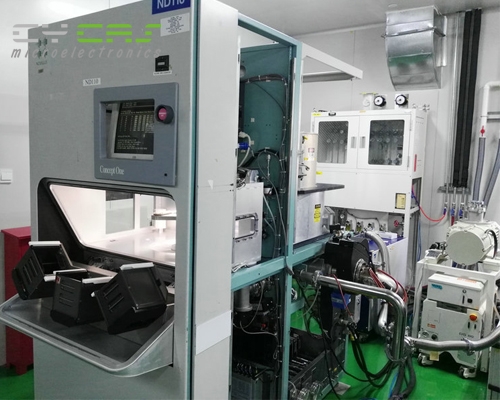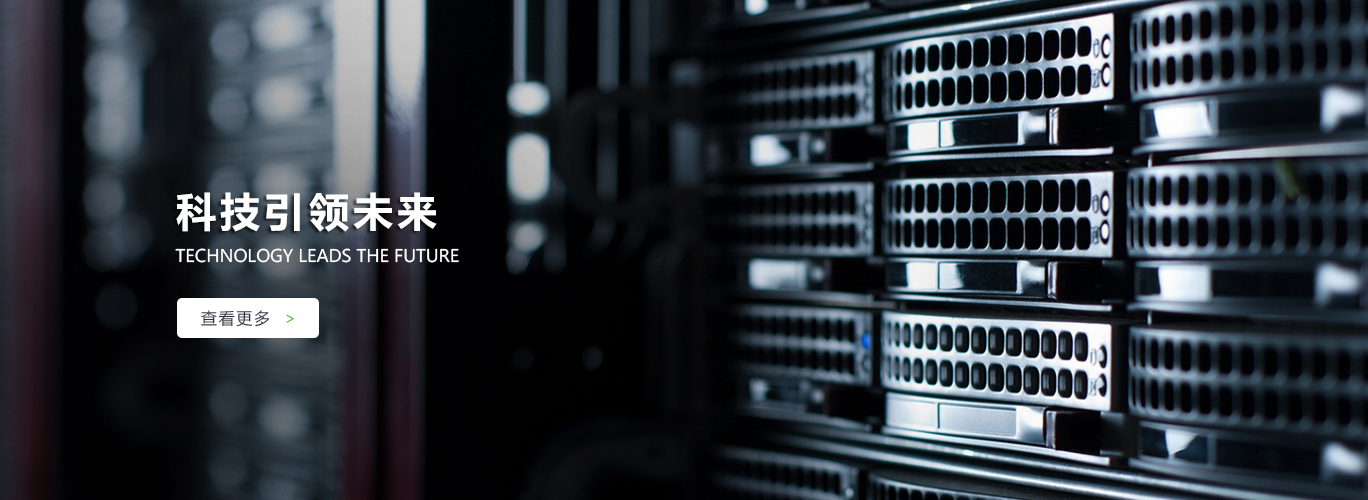新闻资讯
联系我们
名 称:苏州赛森电子科技有限公司
电 话:0512-58987901
传 真:0512-58987201
邮 箱:sales@cycas.com
地 址:江苏省张家港经济开发区福新路1202号 215600PRC
网 址:www.cycas.com
Name: Suzhou cycas Microelectronics Co., Ltd.
Tel.: 0512-58987901
Fax: 0512-58987201
Email: sales@cycas.com
Address: No.1202,Fuxin Road,Zhangjiagang Economic Development Zone,Jiangsu Province 215600PRC
Website: www.cycas.com
PVD沉积方式的比较Comparison of PVD deposition methods
发布日期:2019-02-16 作者:www.cycas.com 点击:
一.PVD是指什么?
PVD(Physical VaporDeposition),在真空条件下,采用物理方法,使材料源表面气化成原子、分子或离子,在基体表面沉积具有某种特殊功能的薄膜的技术。PVD主要分为蒸镀、溅射和离子镀三大类。

二.真空蒸镀
真空条件下,将镀料加热蒸发或升华,材料的原子或分子直接在衬底上成膜的技术。以下介绍几种常见的真空蒸镀技术:
1.电阻蒸发
采用电阻加热蒸发源的蒸发镀膜技术,一般用于蒸发低熔点材料,如铝、金、银、硫化锌、氟化镁、三氧化二铬等;加热电阻一般采用钨、钼、钽等。
优点
结构简单、成本低、
缺点
材料易与坩埚反应,影响薄膜纯度
不能蒸镀高熔点的介电薄膜;
蒸发率低
2.电子束蒸发
利用高速电子束加热使材料汽化蒸发,在基片表面凝结成膜的技术。电子束热源的能量密度可达104-109w/cm2,可达到3000℃以上,可蒸发高熔点的金属或介电材料如钨、钼、锗、SiO2、AL2O3等。
电子束加热的蒸镀源有直枪型电子枪和e型电子枪两种(也有环行),电子束自源发出,用磁场线圈使电子束聚焦和偏转,对膜料进行轰击和加热。
优点
可蒸发任何材料
薄膜纯度高
直接作用于材料表面,热效率高
缺点
电子枪结构复杂,造价高
化合物沉积时易分解,化学比失调
3.激光蒸发
采用高能激光束对材料进行蒸发,用以形成薄膜的方法,一般称为激光蒸镀。
优点
薄膜纯度高
蒸发速率高
特别适合蒸发成分复杂的合金或化合物,膜层的化学计量比与靶材保持一致
缺点
易产生微小颗粒飞溅,影响薄膜质量。
4.感应加热蒸发
利用高频电磁场感应加热,使材料汽化蒸发在基片表面凝结成膜的技术。
优点
蒸发速率大,可比电阻蒸发源大10倍左右
蒸发源的温度稳定,不易产生飞溅现象
坩埚温度较低,坩埚材料对膜导污染较少
缺点
蒸发装置必须屏蔽
造价高、设备复杂
三.溅射镀膜
在真空中,高能粒子轰击材料表面,使其原子获得足够的能量而逸出表面,到达衬底凝结成膜的技术。
与真发镀膜相比,溅射镀膜适用于所有(包括高熔点)材料,具有附着力强、成分可控、易于规模化生产等优点.
1.二极溅射
在靶材和衬底之间加上一个直流高压,极板间的气体(一般为Ar2)电离,高速带电离子轰击靶材表面的溅射镀膜技术。要保持自持放电,在两极板间距为数厘米的正常溅射间距下,放电气压一般高达10帕,这对溅射效率和薄膜质量都是不利的。因此,直流溅射多采用非自持放电,也就是加入热电子发射极和辅助阳极的四极溅射,可使溅射在10-1~10-2帕的低气压下进行。
优点
结构简单
缺点
只能溅射导电性好的金属材料
溅射效率较低
2.射频溅射
采用射频电源代替直流电源,在靶和衬底间施加高频电压,溅射时,靶极会产生自偏压效应(即靶极会自动处于负电位状态),使绝缘靶的溅射得到维持。常用的频率约为13.56兆赫。
优点
可以溅射所有材料,包括导体和绝缘体
溅射效率高
可大规模生产
缺点
射频电源有一定的辐射问题
3.磁控溅射
磁控溅射的工作原理是指电子在电场E的作用下,在飞向基片过程中与氩原子发生碰撞,使其电离产生出Ar正离子和新的电子;新电子飞向基片,Ar离子在电场作用下加速飞向阴极靶,并以高能量轰击靶表面,使靶材发生溅射。在溅射粒子中,中性的靶原子或分子沉积在基片上形成薄膜,而产生的二次电子会受到电场和磁场作用,产生E(电场)×B(磁场)所指的方向漂移,简称E×B漂移,其运动轨迹近似于一条摆线。若为环形磁场,则电子就以近似摆线形式在靶表面做圆周运动,它们的运动路径不仅很长,而且被束缚在靠近靶表面的等离子体区域内,并且在该区域中电离出大量的Ar 来轰击靶材,从而实现了高的沉积速率。随着碰撞次数的增加,二次电子的能量消耗殆尽,逐渐远离靶表面,并在电场E的作用下最终沉积在基片上。由于该电子的能量很低,传递给基片的能量很小,致使基片温升较低。磁控溅射是入射粒子和靶的碰撞过程。入射粒子在靶中经历复杂的散射过程,和靶原子碰撞,把部分动量传给靶原子,此靶原子又和其他靶原子碰撞,形成级联过程。在这种级联过程中某些表面附近的靶原子获得向外运动的足够动量,离开靶被溅射出来。
1、 What does PVD mean? PVD (physical vapor deposition) is a kind of technology which uses physical methods to vaporize the surface of material source into atoms, molecules or ions under vacuum, and to deposit films with special functions on the surface of substrate. PVD is mainly divided into three categories: evaporation, sputtering and ion plating.
2 Under vacuum condition, the material is heated, evaporated or sublimed, and the atoms or molecules of the material are directly deposited on the substrate.
Several common vacuum evaporation technologies are introduced as follows:
1. Resistance evaporation adopts evaporation coating technology of resistance heating evaporation source, which is generally used to evaporate low melting point materials, such as aluminum, gold, silver, zinc sulfide, magnesium fluoride, chromium trioxide, etc.; heating resistance generally adopts tungsten, molybdenum, tantalum, etc.
Advantages:
simple structure, low cost,
disadvantages: the material is easy to react with the crucible, which affects the purity of the film. The dielectric film with high melting point cannot be evaporated; the evaporation rate is low.
2. The technology of electron beam evaporation, which uses high-speed electron beam heating to vaporize the material and condense the film on the substrate surface.The energy density of the electron beam heat source can reach 104-109w / cm2, which can reach over 3000 ℃, and can evaporate high melting point metals or dielectric materials such as tungsten, molybdenum, germanium, SiO2, Al2O3, etc. There are two kinds of electron beam heating sources, i.e. the straight gun type electron gun and the E-type electron gun (or the loop type). The electron beam is emitted from the source. The magnetic field coil is used to focus and deflect the electron beam and bombard and heat the film material.
Advantages: it can evaporate any material. The film has high purity and directly acts on the surface of the material. The thermal efficiency is high. The structure of the electron gun is complex, the cost is high. The compound is easy to decompose when it is deposited,
Disadvantage:
the chemical ratio is out of balance.
3. Laser evaporation uses high-energy laser beam to evaporate the material to form the film, which is generally called laser evaporation. The advantages of the film are high purity, high evaporation rate. It is especially suitable for the alloy or compound with complex evaporation components. The stoichiometric ratio of the film is consistent with the target material. It is easy to produce tiny particles splashing, which affects the film quality.
4. Induction heating evaporation is a technology that uses high frequency electromagnetic field induction heating to make the material evaporate and condense on the substrate surface to form a film.
Advantages:
large evaporation rate, about 10 times larger than resistance evaporation source The temperature of the evaporation source is stable, and it is not easy to produce splashing phenomenon.
Disadvantage:
The temperature of the crucible is low, and the crucible material has less pollution to the film guide. The evaporation device must be shielded with high cost and complex equipment. Third, the sputtering coating in vacuum, the high-energy particles bombard the surface of the material, so that the atoms can obtain enough energy to escape from the surface, and reach the substrate condensation film technology. Compared with the real hair coating, the sputtering coating is suitable for all (including high melting point) materials. It has the advantages of strong adhesion, controllable composition, easy to scale production and so on. 1. The two pole sputtering adds a DC high voltage between the target and the substrate, the gas (generally ar2) between the plates is ionized, and the high-speed charged ion bombards the target surface. In order to maintain the self-sustaining discharge, the discharge pressure is generally as high as 10 Pa at a normal sputtering distance of several centimeters between the two plates, which is not good for sputtering efficiency and film quality. Therefore, DC sputtering mostly uses non self sustaining discharge, that is, four pole sputtering with hot electron emitter and auxiliary anode, which can make sputtering at low pressure of 10-1-10-2 PA. Advantages: simple structure and disadvantages: only the metal material with good conductivity can be sputtered with low sputtering efficiency. 2. RF power supply is used instead of DC power supply for RF sputtering. When high frequency voltage is applied between target and substrate, the target electrode will produce self bias effect (i.e. the target electrode will automatically be in negative potential state), so that the sputtering of insulation target can be maintained. The commonly used frequency is about 13.56 MHz. Advantages:
all materials can be sputtered, including conductors and insulators; high sputtering efficiency; mass production
Disadvantages There are some radiation problems in RF power supply.
3. The working principle of magnetron sputtering is that electrons collide with argon atoms in the process of flying to the substrate under the action of electric field E, resulting in AR positive ions and new electrons; new electrons fly to the substrate, and Ar ions accelerate to fly to the cathode target under the action of electric field, and bombard the target surface with high energy, resulting in sputtering of the target. In sputtered particles, the neutral target atoms or molecules are deposited on the substrate to form a thin film, and the secondary electrons generated will be affected by the electric field and magnetic field, resulting in the direction drift of E (electric field) × B (magnetic field), which is called e × B drift for short, and its motion track is similar to a cycloid. If the magnetic field is circular, the electrons move in the form of approximate cycloid on the target surface. Their motion path is not only very long, but also bound in the plasma region near the target surface. In this region, a lot of AR is ionized to bombard the target, thus achieving a high deposition rate. With the increase of the number of collisions, the energy of the secondary electrons is exhausted and gradually away from the target surface, and finally deposited on the substrate under the action of the electric field E. Because the energy of the electron is very low and the energy transferred to the substrate is very small, the substrate temperature rise is low. Magnetron sputtering is a collision process between the incident particles and the target. The incident particle experiences a complex scattering process in the target, collides with the target atom, and transfers part of the momentum to the target atom, which collides with other target atoms, forming a cascade process. In this kind of cascade process, some target atoms near the surface obtain enough momentum to move outwards, leaving the target to be sputtered out.
本文网址:http://www.cycas.com/news/422.html
相关标签:干法去胶机
最近浏览:
相关产品:
相关新闻:
- 蚀刻机腐蚀加工蚀刻网片的工艺流程Process flow of etching mesh by etching machine
- 等离子体干法去胶机工艺原理及使用Application of plasma dry Resist Asher
- 教您如何为金属蚀刻机调配油墨!Teach you how to mix ink for metal etching machine!
- 2018 Chinese semiconductor material and equipment industry development conference held2018中国半导体材料及设备产业发展大会举行
- 蚀刻机腐蚀加工蚀刻网片的工艺流程Process flow of etching mesh by etching machine
- 微波等离子干法去胶机影响因素:Influencing factors of microwave plasma dry degumming machine:
- Microwave plasma dry degumming machine operation and personnel微波等离子干法去胶机操作及配合人员防护:
- 干法去胶工艺原理及使用?Principle and application of dry degumming process?
- 等离子干法去胶机反应机理:Reaction mechanism of plasma dry degumming machine:
- Factors affecting the degreasing of alkaline solution before etching the label of etching machine蚀刻机蚀刻标牌之前影响碱液除油的的因素

